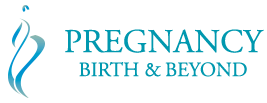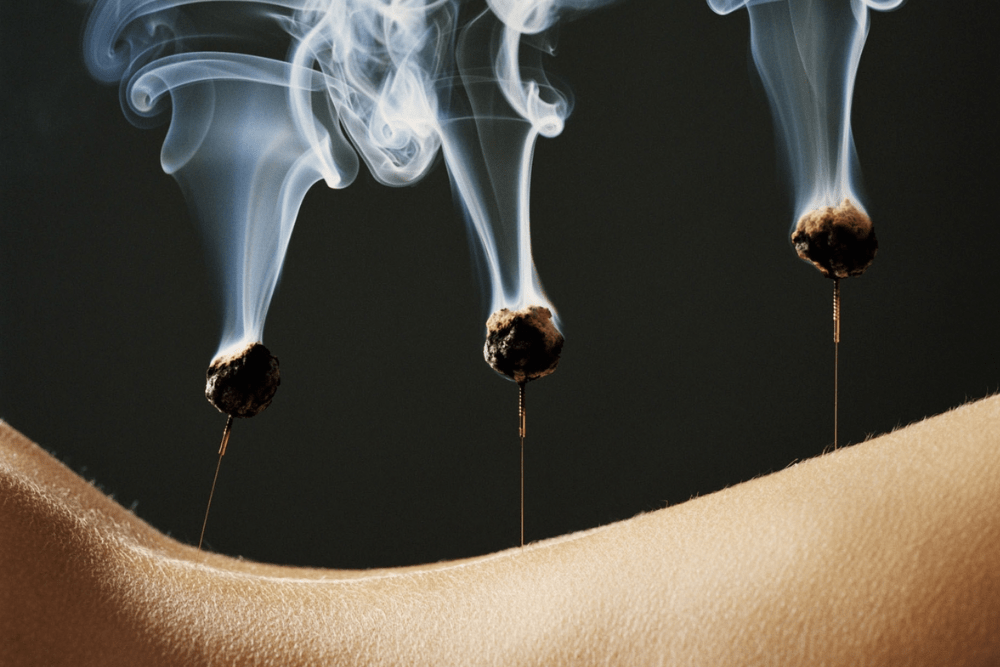How to do your baby a good turn: Moxibustion for breech presentation
As a pregnancy progresses and the baby continues to grow, available space within the uterus reduces resulting in less room for the baby to move. The baby’s head eventually becomes heavier than its bottom and under normal circumstances around 32 weeks gestation the baby sinks down, head first into the pelvis and engages in preparation for birth.
Breech presentation: The Incidence
Between 29-32 weeks 15% of all babies will be in a breech position. This means that the baby is presenting with its buttock, knees or feet pointing down, essentially poised to come out bottom first. Only 3-4% of these presentations will stay in this position until labour.
As such breech presentation is considered normal in preterm pregnancies and is not generally medically diagnosed until the last few weeks of pregnancy.
When is breech presentation a problem?
While the majority of breech babies turn spontaneously before birth, the longer a baby stays in the breech position with conditions becoming more cramped, the less likely it will be to turn of its own volition.
Vaginal birth for a breech baby is uncommon as the skills to assist women have been lost. Most doctors recommend a caesaran birth for breech babies.
The remedy for this situation is to find an effective way of turning the baby quickly and safely to the physiological desirable head down position.
By the time women present at a Traditional Chinese Medicine (TCM) clinic they are usually at a crossroad. If their baby remains in breech position their freedom of choice around birthing options is dramatically reduced and the time to turn the baby naturally is fast running out.
What is moxibustion?
Moxibustion is an externally applied TCM treatment using a Chinese herb called Moxa (Artemisia argyi), commonly known as ‘Mugwort’. For external use Moxa is compressed and rolled into a cigar-shaped herbal stick. Moxa sticks are then lit and held over acupuncture points. The radiant heat produced has the effect of stimulating the point.
Some practitioners will use ‘smokeless Moxa’, an alternative, charcoaled preparation of the herb which as the name suggests produces much less smoke, making it more suitable for use in the clinic and at home.
How is moxa used to turn breech babies?
During a TCM consultation to turn a breech baby the practitioner will take a comprehensive case history, make a diagnosis and apply the appropriate acupuncture treatment. They will assess if moxibustion might be helpful.
Practitioners will then instruct women on how to locate the appropriate acupuncture points and demonstrate how to safely apply moxa at home.
The acupuncture point UB 67 is the primary point selected for use because it is the most dynamic point to activate the uterus. Its forte is in turning malpositioned babies. It is located on the outer, lower edge of both little toenails.
According to TCM theory, moxa has a tonifying and warming effect which promotes movement and activity. The nature of heat is also rising. This warming and raising effect is utilised to encourage the baby to become more active and lift its bottom up in order to gain adequate momentum to summersault into the head down position.
This technique can also be used to reposition transverse presentation, a situation where the baby’s has its shoulder or back pointing down, or is lying sideways across the abdomen.
How effective is it?
A 3 year study published in AJCM (2001) based in a facility where 1437 births were reported examined how effective moxibustion and acupuncture were in turning breech presentation.
Only women who were 28 weeks pregnant or later diagnosed with breech presentation were entered into the study.
The control group consisted of 224 women. This group was given exercise and external cephalic manipulation. They had a spontaneous correction rate of 73%.
The experimental group consisted of 133 women. They received 30 minutes of moxibustion to UB67 daily and acupuncture, but no exercise or external cephalic manipulation. They had a correction rate of 92%.
The study concluded that acupuncture and moxibustion is a safe and effective modality to correct breech presentation in a clinical setting.
Basic instructions for use
Prior to commencing moxibustion, ensure the room is adequately ventilated as moxa will produce profuse, smelly smoke similar to cigarette smoke which can linger in a closed room.
The pregnant woman should sit in a comfortable, reclining position with loose fitting clothes over her abdomen. Her partner should begin by lighting two moxa sticks and hold them bilaterally over UB67 about 2-3cms away from the skin, close enough to feel pleasantly warm but not enough to feel uncomfortable or burn the skin. Moxibustion should be applied for a total of 15 minutes daily for 10 consecutive days. If the baby has not turned within this time then the situation should be reassessed by your acupuncturist and follow up advised.
Moxibustion is best performed in the evening to take full advantage of the horizontal resting position of sleep.
With less gravitational pressure bearing down into the woman’s pelvis conditions are more conducive to the baby turning. It is not uncommon for women to experience increased fetal movement once the moxa is applied and for the hours following.
An obstetrician or midwife will confirm if the baby has turned, however most women report having a strong body sensation of the baby moving and somersaulting at the time it occurs.
Moxa should be ceased as soon as the woman knows for sure that her baby has turned.
Adjunctive treatment
Breech tilt is a positioning technique aimed at discouraging the baby’s bottom from settling into the pelvis. Women can begin this technique from 32 to 35 week’s gestation.
Begin by propping one end of an ironing board securely on a sofa or chair slanted at @30 degrees incline. It might be necessary to bolster the sides to prevent the ironing board from slipping or tipping.
Lie face up on the ironing board with your feet pointing towards the elevated end. That is with your head positioned lower than your feet. Bend your knees, keeping your feet flat on the board.
Begin by taking deep, relaxing breaths in this position, and try to avoid tensing your body. You might like to use your breath to help deepen your relaxation by focusing your mind on counting your breath. Inhale for the count of 4 and exhale for the count of 4, so the length of inhalation roughly matches the length of exhalation.
Alternatively, use the ‘I let go’ breath.
The inhalation will just happen and on the exhalation repeating to yourself ‘I let go’. As you exhale feel the tension of the day and the week passing, inviting the body to enter into deeper rest and relaxation.
Sound vibration also seems to help activate the baby in this position. The buzzing sensation and noise of an electric toothbrush on the lower abdomen or i-pod speakers placed over the pubic bone with classical music playing might also be combined when in this position.
Use this technique for 10-15 minutes 2 to 3 times per day until the baby flips.
England & Horowitz (1998) suggests that breech tilting 80% effective to turn breech between 32-35 weeks
It is best to practise breech tilt on an empty stomach and at times when the baby is most active. The gravity of the incline pushes the pelvic contents up and helps the baby to fall back form the pelvic brim. The theory is that on standing the baby will have more space and momentum to somersault and greater opportunity for the heavier head to sink downwards.
Conclusion
There is no fool proof technique that guarantees a late term baby will turn from a breech position. Moxibustion is a surprisingly effective, safe, non-invasive treatment worth women considering should they wish to attempt to turn their baby naturally and avoid restricting their birthing options.
Unfortunately, however a percentage of babies will invariably stay in the breech position until birth, making their grand entry into the world bottom first.
Please note that this information is for general advice only and women should check with their health care provider before attempting to use moxibustion treatment to turn their baby to ensure that no contraindications apply.
References
England, P. & Horowitz, R (1998) Birthing From Within: An extraordinary guide to childbirth preparation (p286), Patera Press: USA
Moxibustion treatment of Breech presentation AJCM (2001) Kanakura, Kometani, Nagata et. al.
Page revised on 15th December 2021




Recent Comments